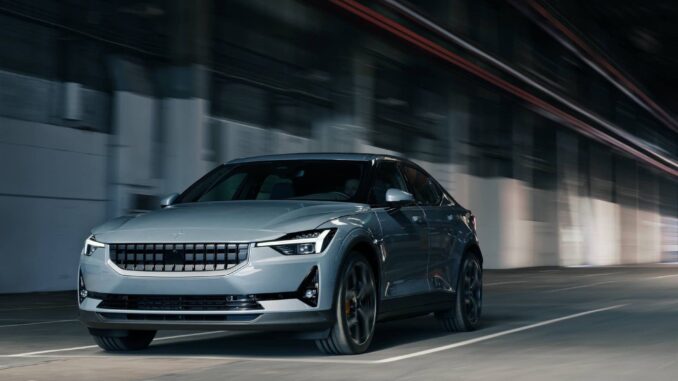
Polestar, the Swedish luxury electric car company spun out from Volvo Car Group, declared a “moonshot aim” of building the first carbon-neutral vehicle by 2030. Rather than relying on more widely used offsets, such as tree planting, the company has announced that it will radically alter the way the new EV is manufactured.
This entails rethinking every aspect of the supply chain, from material sourcing to production, as well as making the vehicle more energy efficient.
Yes, it is a very ambitious goal, maybe more than we can comprehend. But before digging deep into Polestar and their crazy goal, let us discuss Carbon neutrality.
Carbon Neutrality
According to Wikipedia, Carbon neutrality is a state of net-zero carbon dioxide emissions. This can be achieved by balancing emissions of carbon dioxide with its removal (often through carbon offsetting) or by eliminating emissions from society (the transition to the “post-carbon economy”). The term is used in the context of carbon dioxide-releasing processes associated with transportation, energy production, agriculture, and industry.
Or, carbon-neutral (or carbon neutrality) is the balance between emitting carbon and absorbing carbon emissions from carbon sinks. Or simply, eliminate all carbon emissions Carbon sinks are any systems that absorb more carbon than they emit, such as forests, soils and oceans.
Simply put we produce carbon dioxide while doing almost everything from simple breathing to advanced manufacturing technics produce carbon dioxide. Carbon neutrality means cancelling out this carbon dioxide by some techniques or strategies.
Now the tough part…
You see, an automobile has a lot of parts and manufacturing the parts and assembling an automobile emits tonnes of carbon dioxide and this is why the challenge is a herculean task because the company have to produce cars with zero emissions but make the manufacturing process also non Co2 generating processes.
A Great and Sincere Vision
Most carmakers offset their carbon emissions by planting trees or participating in other green initiatives, but Polestar’s CEO, Thomas Ingenlath, believes that true carbon neutrality demands a radical rethink of how cars are built, especially now that climate scientists are raising concerns about forests’ long-term carbon storage capacity.
“Offsetting is a cop-out,” said Ingenlath. “By pushing ourselves to create a completely climate-neutral car, we are forced to reach beyond what is possible today. We will have to question everything, innovate and look to exponential technologies as we design towards zero.”
Polestar also cites research by the Intergovernmental Panel on Climate Change, which states that most forests are still logged with old methods and machinery, resulting in substantial carbon emissions.
Furthermore, by neglecting to reduce their emissions, producers are contributing to the conditions that lead to more frequent forest fires. Droughts are becoming more common as global temperatures rise, potentially turning a carbon-swallowing forest into a tinderbox.
“Consumers are a significant driving factor in the transformation to a sustainable economy,” Ingenlath continued. They must be provided with the necessary tools in order to make well-informed and ethical judgments. This clarifies everything. Polestar 2 now has a carbon footprint when it leaves the factory. We want to present an automobile that does not in 2030.”
Polestar’s Head of Sustainability, Fredrika Klarén, echoed Ingenlath’s comments, saying: “We’re electric, so we don’t have to worry about combustion engines producing toxic emissions – but that doesn’t mean our job is done.
“We will now work to eradicate all emissions stemming from production. Now is a historic and exciting time for carmakers, an opportunity to seize the moment, do better and dare to build the dream of climate-neutral, circular and beautiful cars.”
A Reality Check and Statistics
As we discussed, Polestar 0 is the company’s latest “moonshot” ambition, which requires Polestar’s design team to locate carbon-neutral sources for commodities including aluminium, lithium, and cobalt by 2030.
While electric cars emit significantly fewer emissions while in operation, their construction is more harmful than typical combustion cars, according to studies. This is due to the process and materials used in battery production.
Polestar’s most recent model, the Polestar 2, has a carbon footprint of roughly 26.6 tonnes, and around 14 tonnes for the petrol engine powered Volvo XC40. After 50,000 miles of driving, it achieves “carbon parity” with the petrol model.
Conclusions
How realistic is Polestar’s lofty ambition? It’s difficult to say, especially given the company has provided no additional information about the steps it wants to take to reach carbon neutrality.
We know that electric vehicles are difficult to manufacture and that obtaining minerals for batteries has major environmental consequences. All players in the supply, manufacturing and retail chains will be required to participate.
Climate action is evidently already ingrained in Polestar’s operations, and climate targets are even factored into the staff bonus scheme. The company also aims to be open: starting with the Polestar 2, all future models will disclose their carbon footprint and tracked risk elements. This information will be available on the company’s website as well as in Polestar Spaces.